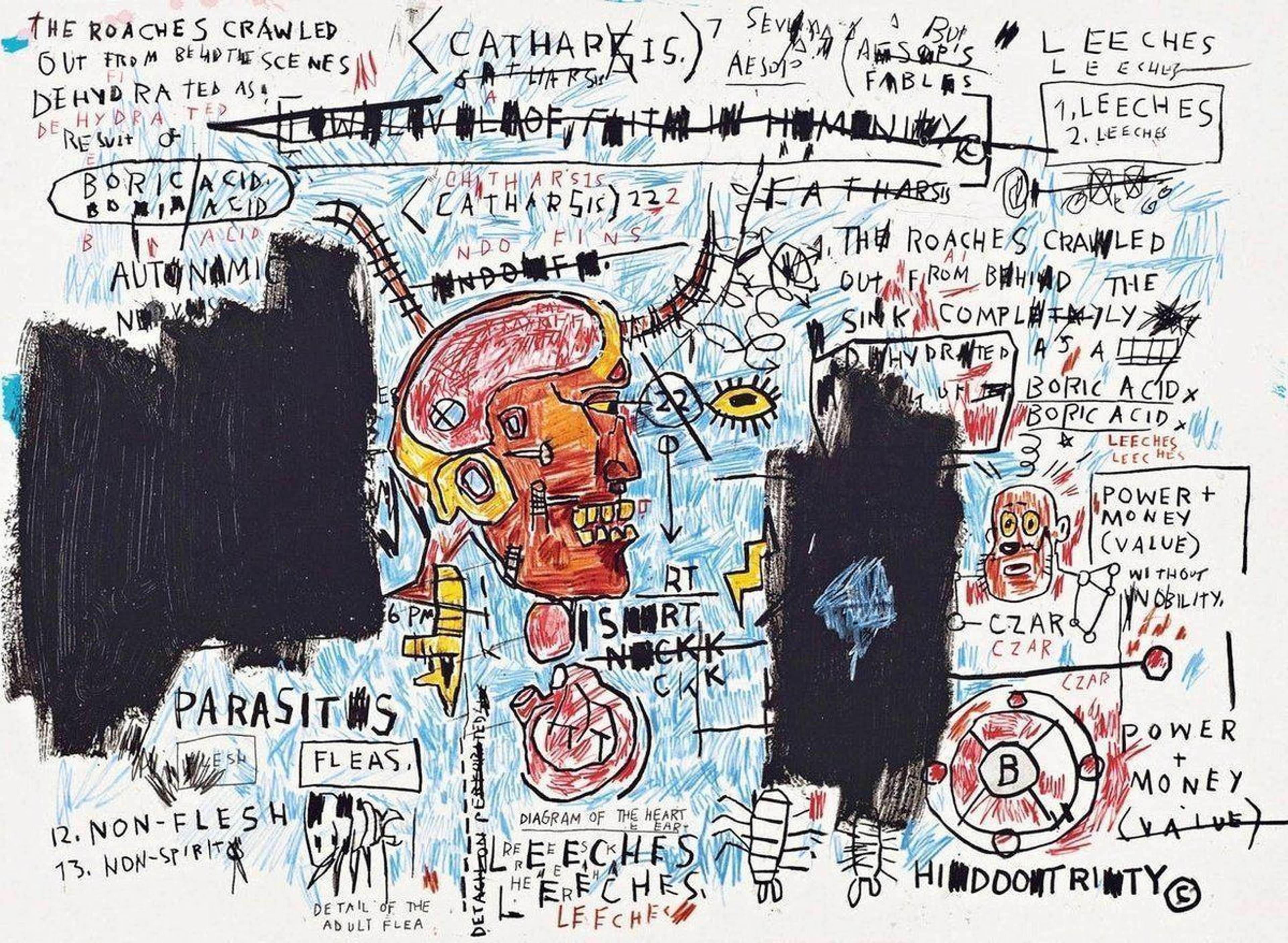
Leeches

Leeches
Unsigned Print
Jean-Michel Basquiat
£14,500-£22,000
$29,000-$45,000 Value Indicator
$27,000-$40,000 Value Indicator
¥140,000-¥210,000 Value Indicator
€17,000-€25,000 Value Indicator
$150,000-$230,000 Value Indicator
¥3,010,000-¥4,570,000 Value Indicator
$19,000-$29,000 Value Indicator
There aren't enough data points on this work for a comprehensive result. Please speak to a specialist by making an enquiry.
56 x 76cm, Edition of 50, Screenprint
Auction Results

Track auction value trend
Meaning & Analysis
Leeches is a screen print in colours produced in 1982 by Jean-Michel Basquiat. In Leeches, pests of various kinds, including ‘parasites’, ‘fleas’ and ‘roaches’ materialise across the image in the form of both text and image, competing against swathes of black and semi-human skulls appearing to bear nuts and bolts. The repeated references to insects and parasites clash against text reading ‘Boric acid’, a widely-used insecticide.
There is the suggestion of an irrepressible animalistic force emerging from obscurity which is confronted by forces of sterilisation and decontamination. Alongside this is the sense of a destabilising of accepted hierarchies, as suggested by ‘Power and money (value) without nobility’.
In the visual universe constructed by Basquiat, martyrdom and nobility is inherited by the people of the street, not those born into family dynasties; Basquiat himself remarked that his art is about “kings, heroes, and the street”, acknowledging his reimagining of what it means to be noble. This interest in the words and images of royalty and nobility mirror the artist’s personal aspiration to be a true star of the art world who transcended his street art background, rather than playing second-fiddle to the gallerists and dealers who brought his work to market.